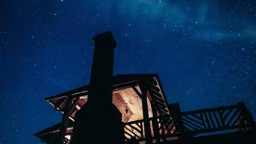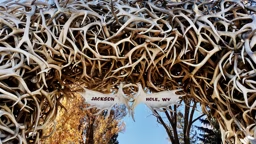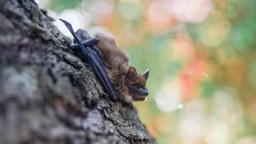READ THE STORY IN THE TRACKS
Twenty years ago, the distant impossibility of seeing a wolf in the wild was a lofty dream of mine. I poured over the amazing photography of Jim Brandenburg, and I dreamed of what that first wolf encounter would be like.
I followed many sets of tracks in the snowy wilderness of northern Minnesota and, one blustery winter day, I was richly rewarded. In gusting and drifting snow, I found tracks with sharp definition in the minute details of claws and pads. But this was impossible! The wind would surely blow the tracks away … unless … Suddenly, three wolves sprang from nearby spruces and ran across a frozen beaver pond like a trio of skittish pranksters.
Reading tracks can help you to find more animals, especially if you are a repeat-visitor to a favorite hiking trail. Keep track of what you have seen in the mud, sand or snow to learn more about which animals are around and how often they are using an area. There are many excellent books on tracking, but time and experience in your own neck of the woods will be the best teacher.
Twenty years ago, the distant impossibility of seeing a wolf in the wild was a lofty dream of mine. I poured over the amazing photography of Jim Brandenburg, and I dreamed of what that first wolf encounter would be like.
I followed many sets of tracks in the snowy wilderness of northern Minnesota and, one blustery winter day, I was richly rewarded. In gusting and drifting snow, I found tracks with sharp definition in the minute details of claws and pads. But this was impossible! The wind would surely blow the tracks away … unless … Suddenly, three wolves sprang from nearby spruces and ran across a frozen beaver pond like a trio of skittish pranksters.
Reading tracks can help you to find more animals, especially if you are a repeat-visitor to a favorite hiking trail. Keep track of what you have seen in the mud, sand or snow to learn more about which animals are around and how often they are using an area. There are many excellent books on tracking, but time and experience in your own neck of the woods will be the best teacher.
The ears have it
“Nashville Warbler,” I say in a hushed whisper.
Cathy picks out the movement and says, “Wow! It’s so tiny. Brian, how do you know that bird’s a Nashville Warbler?”
Tony beats me to it and responds with a smirk, “It was singing country!”
Not exactly, but Tony had the right idea. I heard it first and found it second. Over 90% of all birds found by wildlife watchers are detected by ear, often by their territorial songs.
Walk through the June woods in watchful silence, and you find yourself surrounded by a chorus of spectacular bird song. It is information, a corridor of sound conveying which species are in the area and how many there are. Follow your ears, and your eyes may soon be feasting on an abundance of glorious and colorful forest feathers.
“Nashville Warbler,” I say in a hushed whisper.
Cathy picks out the movement and says, “Wow! It’s so tiny. Brian, how do you know that bird’s a Nashville Warbler?”
Tony beats me to it and responds with a smirk, “It was singing country!”
Not exactly, but Tony had the right idea. I heard it first and found it second. Over 90% of all birds found by wildlife watchers are detected by ear, often by their territorial songs.
Walk through the June woods in watchful silence, and you find yourself surrounded by a chorus of spectacular bird song. It is information, a corridor of sound conveying which species are in the area and how many there are. Follow your ears, and your eyes may soon be feasting on an abundance of glorious and colorful forest feathers.
A lush green canopy of young summer leaves seems to hide every animal for miles around, as sparkling sunlight filters and bedazzles through the forest’s upper branches. Except for the occasional flitting butterfly, it seems the woods will never reveal their most animated secrets.
Then, senses suddenly aware, a small amount of drama unfolds. There is something wild here in the wild! A moment, a fleeting photograph perhaps, and an acquaintance made with an amazing animal make a hike memorable forever.
Seeing more wildlife with friends and family is a worthy challenge for every hike. “Wildlife” is more than just moose, bear and wolf. It is also the mysterious blue-spotted salamander, the vibrant Western Tanager, and the enduring porcupine. From the forest’s high canopy to the dark and damp cover of a pulpy fallen log, wildlife abounds.
Then, senses suddenly aware, a small amount of drama unfolds. There is something wild here in the wild! A moment, a fleeting photograph perhaps, and an acquaintance made with an amazing animal make a hike memorable forever.
Seeing more wildlife with friends and family is a worthy challenge for every hike. “Wildlife” is more than just moose, bear and wolf. It is also the mysterious blue-spotted salamander, the vibrant Western Tanager, and the enduring porcupine. From the forest’s high canopy to the dark and damp cover of a pulpy fallen log, wildlife abounds.
Learning a characteristic sound – like the territorial, screaming bark-howl of a red fox – unlocks another mystery of your favorite woodlot and gives you a life tool for finding that same joy time and time again.
Keen awareness prevails in wildlife watching, and extends beyond birds to frogs, skulking mammals, and more.
The early bird wins
You could say spending time on vacation with me is hard work. While most folks like to sleep in, I find bliss by waking before dawn and getting back to the cabin before the rest of the world wakes up. Strangely, most people choose the very best hiking times for more “practical” things such as waking up, eating breakfast, and cooking and eating the evening meal.
But most animals are active in the few hours around sunrise and sunset. Breaking your human routines will increase your odds of making memories in the wild and later sharing those memories around a hearty brunch.
Walk softly & carry binoculars
Soft fabrics like polar fleece and flannel, in muted tones, are important for blending in during hikes and getting close to more wildlife.
I once enjoyed viewing two deer from close prox- imity for a very long time. Suddenly, both deer lifted their heads, looked in unison to some unseen danger, and bolted away. A few seconds later, I could hear the rhythmic swishing of rainproof polyester jackets and the unmistakable “left-right-left-right” pace of two human hikers. They “swish-swished” right on by, unaware of the deer and even my own presence.
A few minutes later, a quick scan of the hillside with my binoculars proved the deer had not run too far away. I watched them a little longer before taking up the trail again in an unmetered, silent pace.
Put it all together
Just about anyone who hikes with me will say the same thing. Somehow, mysteriously, they see more wildlife when I’m along for the hike. Why? Well, putting it all together, I guess I just approach hiking differently. I walk differently, scout ahead differently, and continually monitor with my ears. I look at the world differently, and I wear different types of clothes than just about everyone I know (but in a good way, I think).
Keen awareness prevails in wildlife watching, and extends beyond birds to frogs, skulking mammals, and more.
The early bird wins
You could say spending time on vacation with me is hard work. While most folks like to sleep in, I find bliss by waking before dawn and getting back to the cabin before the rest of the world wakes up. Strangely, most people choose the very best hiking times for more “practical” things such as waking up, eating breakfast, and cooking and eating the evening meal.
But most animals are active in the few hours around sunrise and sunset. Breaking your human routines will increase your odds of making memories in the wild and later sharing those memories around a hearty brunch.
Walk softly & carry binoculars
Soft fabrics like polar fleece and flannel, in muted tones, are important for blending in during hikes and getting close to more wildlife.
I once enjoyed viewing two deer from close prox- imity for a very long time. Suddenly, both deer lifted their heads, looked in unison to some unseen danger, and bolted away. A few seconds later, I could hear the rhythmic swishing of rainproof polyester jackets and the unmistakable “left-right-left-right” pace of two human hikers. They “swish-swished” right on by, unaware of the deer and even my own presence.
A few minutes later, a quick scan of the hillside with my binoculars proved the deer had not run too far away. I watched them a little longer before taking up the trail again in an unmetered, silent pace.
Put it all together
Just about anyone who hikes with me will say the same thing. Somehow, mysteriously, they see more wildlife when I’m along for the hike. Why? Well, putting it all together, I guess I just approach hiking differently. I walk differently, scout ahead differently, and continually monitor with my ears. I look at the world differently, and I wear different types of clothes than just about everyone I know (but in a good way, I think).
When hiking, keep a good lookout for habitat that looks and feels promising. When you find running water, a low thicket, or when cresting a hill, slow your pace, mixing up your time between walking and stopping, and changing the way your feet work the landscape.
My earth-toned fleece and soft-soled boots keep me silent, and I stop in the forest’s shadows, pausing to look for movement or the out-of-place. Wait, is that an upturned tree stump or a black bear?
But with all that said, when I’m just out hiking for exercise, all that strategy is out the window … and that’s when I prefer hiking along the edges of ridges, merely taking advantage of a commanding view.
Writer/photographer Brian M. Collins is also a science teacher. He enjoys doing his wildlife homework before visiting new places. Check out his nature photography website at www.imagesinnaturallight.com.
My earth-toned fleece and soft-soled boots keep me silent, and I stop in the forest’s shadows, pausing to look for movement or the out-of-place. Wait, is that an upturned tree stump or a black bear?
But with all that said, when I’m just out hiking for exercise, all that strategy is out the window … and that’s when I prefer hiking along the edges of ridges, merely taking advantage of a commanding view.
Writer/photographer Brian M. Collins is also a science teacher. He enjoys doing his wildlife homework before visiting new places. Check out his nature photography website at www.imagesinnaturallight.com.


 Thinkstock.com
Thinkstock.com 


 Brian M. Collins
Brian M. Collins 










